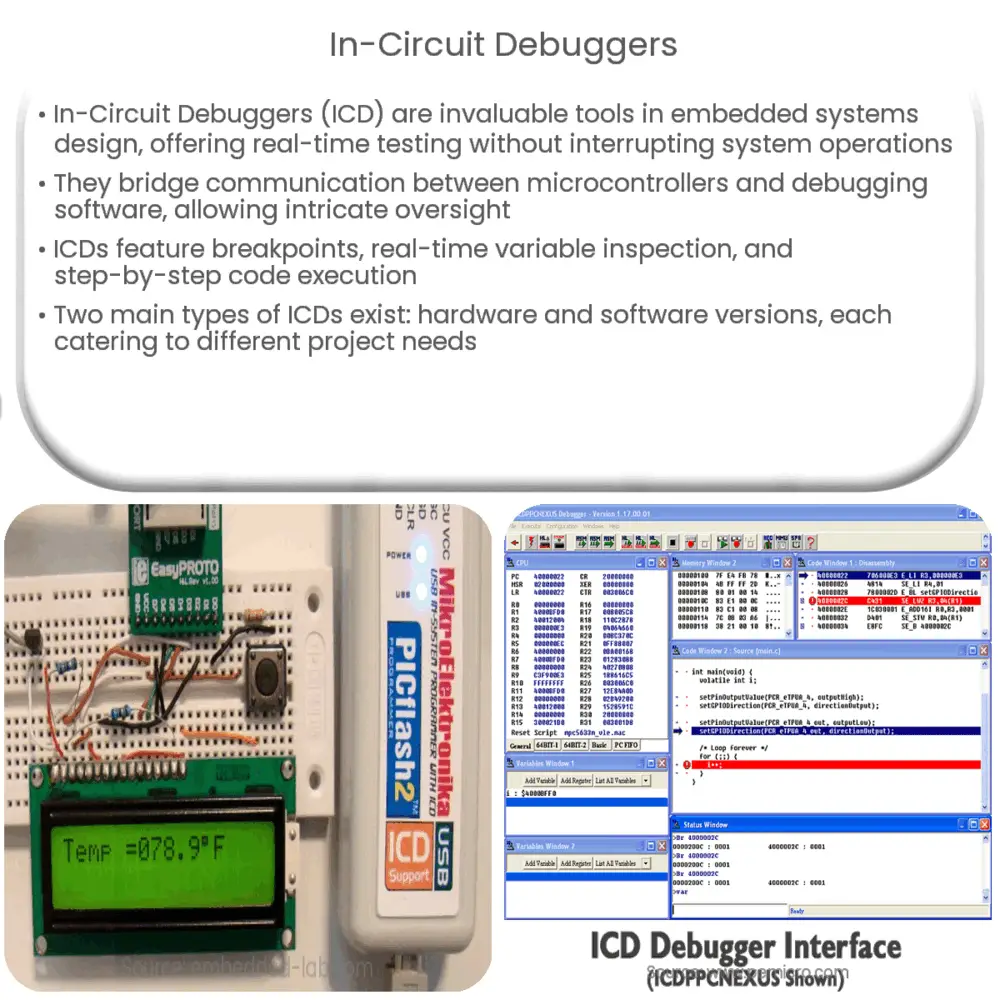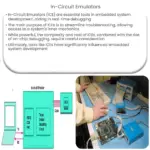Explore the role and importance of In-Circuit Debuggers (ICDs) in embedded systems development, their key features, types, and future prospects.

Understanding In-Circuit Debuggers
An In-Circuit Debugger (ICD) is a highly useful tool in embedded systems design, serving as a lifeline for developers when it comes to identifying and fixing software bugs. Its ability to test and debug the microcontroller of an embedded system in real-time, without interrupting its operation, sets it apart from traditional debugging methods.
Working of an In-Circuit Debugger
At its core, the ICD interconnects the target microcontroller and a debugging device. Once linked, it facilitates direct communication between the microcontroller’s firmware and the debugging software. This enables the user to control the operation of the microcontroller, monitor its inner workings, and observe the interplay between hardware and software in real time.
Key Features of In-Circuit Debuggers
- Breakpoints: Breakpoints are fundamental features of ICDs. They allow the user to halt the execution of the program at specified points, making it possible to scrutinize specific segments of the code.
- Real-time Variable Inspection: This feature enables the developer to inspect variables and memory content while the system is operating. It’s an invaluable aid in identifying problem areas in the code or the system’s operation.
- Step-by-step Execution: ICDs allow developers to execute code step-by-step, either line-by-line or function-by-function. This facilitates a detailed analysis of how each operation affects the system.
Types of In-Circuit Debuggers
There are two main types of in-circuit debuggers:
- Hardware ICDs: These are physical devices that connect to the target microcontroller via specific debug ports. They are often standalone units but can also be built into development boards.
- Software ICDs: These are software solutions that debug via a standard interface such as JTAG or SWD. They often run on standard PCs and are typically used with a hardware adapter.
While both types have their merits and demerits, the choice between hardware and software ICDs usually depends on the specific needs of the development project and the resources at hand.
Role of In-Circuit Debuggers in Development
In-Circuit Debuggers play a crucial role in the development cycle of embedded systems. They help accelerate the debugging process, reduce time-to-market, and ensure the delivery of robust and reliable software. Let’s look into some of the reasons why ICDs are indispensable in the embedded systems development process in the next section.
Indispensability of In-Circuit Debuggers in Embedded Systems Development
1. Time Efficiency: Debugging is often the most time-consuming part of software development. With their ability to debug in real-time, ICDs drastically cut down on debugging time. This acceleration is especially crucial in the embedded systems industry, where time-to-market is a key determinant of success.
2. Improved Quality: ICDs enhance the quality of software by facilitating detailed inspection and analysis. Developers can scrutinize the interplay between software and hardware, ensuring the final product is robust and reliable.
3. Cost Savings: By reducing debugging time and enhancing software quality, ICDs lead to significant cost savings. The reduced need for rework and lower likelihood of product recalls are some of the ways ICDs contribute to cost-efficiency.
The Future of In-Circuit Debuggers
As embedded systems become more complex, the role of ICDs in their development is set to increase. Newer ICDs are likely to feature more sophisticated capabilities, such as enhanced memory inspection, advanced power profiling, and support for multi-core processors.
In Conclusion
The value of In-Circuit Debuggers to the development and debugging of embedded systems cannot be overstated. These tools provide real-time insight into the interaction between software and hardware, accelerating the debugging process and ensuring the development of high-quality, robust products. With advancements in technology and the increasing complexity of embedded systems, the importance and utility of ICDs are only set to grow. Thus, an understanding and mastery of these tools is an essential skill for any developer in the field of embedded systems.




